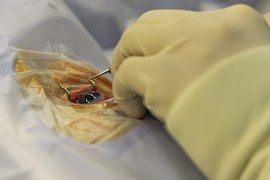
If you are someone that is in the market for a good plastic surgeon, then you will be looking for someone that can do the best job. And after the work is done, you will leave feeling more like your true self than you ever felt before you had the work done. But if you are unlucky enough to have a bad experience then it can have lifelong unsightly results.
Picking the right plastic surgeon
Pick the Right Specialty
Within the realm of plastic surgeons, each one has a more specific specialty that they are known for and that requires a different skill set. That is why it is important to choose a board-certified plastic surgeon that can show plenty of experience within the precise procedure that the patient is planning on having work done on.
Doctor’s Portfolio
 A potential patient should always ask for a doctor’s portfolio book to see for themselves what kind of results they are capable of providing. Since aesthetics are highly subjective, it is critical to making one’s judgment on whether they like the results or not. It would not hurt to look through the portfolio for a person that has or had similar features as the person looking to get work done. It most likely would be a good indicator of how the potential patient’s results will turn out. Take the time to review more than one plastic surgeon’s work before making any decisions on a service provider.
A potential patient should always ask for a doctor’s portfolio book to see for themselves what kind of results they are capable of providing. Since aesthetics are highly subjective, it is critical to making one’s judgment on whether they like the results or not. It would not hurt to look through the portfolio for a person that has or had similar features as the person looking to get work done. It most likely would be a good indicator of how the potential patient’s results will turn out. Take the time to review more than one plastic surgeon’s work before making any decisions on a service provider.
Feel Comfortable
There should be a certain comfort level that comes when a new patient meets their potential plastic surgeon for the first time. There is no substitute for that positive connection that should come from the initial consultation. Take a few minutes to ask questions and asses how comfortable the connection is and how the doctor’s bedside manner will be throughout the process. If the patient does not feel completely comfortable, then they should not proceed any further with that particular practitioner.
Price Listing
Ask for a price listing for the future services to be provided. There should be a highly transparent process for which the practitioner should have no problem releasing the material produced for a cross comparison with others in the local area. You do not want to necessarily look for the lowest price point amongst the estimates that you receive because it could be an indicator of the quality of their work.
 A patient should trust their instincts and look for the service provider that will most likely meet all of their plastic surgery needs. Do not hire the first one that you meet, shop around for the right fit. Talk to previous clients of the plastic surgeon to find out if they were happy with their individual results or if they had any unforeseen problems to be prepared for.…
A patient should trust their instincts and look for the service provider that will most likely meet all of their plastic surgery needs. Do not hire the first one that you meet, shop around for the right fit. Talk to previous clients of the plastic surgeon to find out if they were happy with their individual results or if they had any unforeseen problems to be prepared for.…


 The past few decades have been characterized by diversity, rapidity, and unpredictability of numerous changes within the area of health, particularly the acute care. Across the world, there have been significant changes which seem promising and strongly convergent despite the differences in health systems and structures. In the capital planning context, two very distinct trends have emerged namely:
The past few decades have been characterized by diversity, rapidity, and unpredictability of numerous changes within the area of health, particularly the acute care. Across the world, there have been significant changes which seem promising and strongly convergent despite the differences in health systems and structures. In the capital planning context, two very distinct trends have emerged namely: All the health care facilities, goods, and services must respect the medical code of conduct and ethics. They should be sensitive to gender, culturally appropriate and should be sensitive to life-cycle requirements. Also, they should be designed to respect privacy rights as well as improve the health status of all the persons concerned.
All the health care facilities, goods, and services must respect the medical code of conduct and ethics. They should be sensitive to gender, culturally appropriate and should be sensitive to life-cycle requirements. Also, they should be designed to respect privacy rights as well as improve the health status of all the persons concerned.